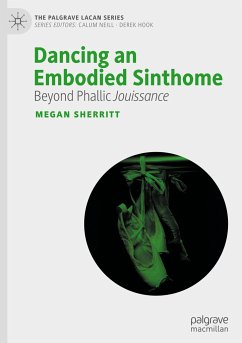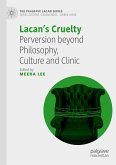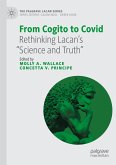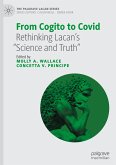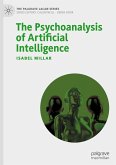This book provides the first in-depth analysis of Lacanian psychoanalytic theory and the art of dance and explores what each practice can offer the other. It takes as its starting point Jacques Lacan's assertion that James Joyce's literary works helped him create what Lacan terms a sinthome, thereby preventing psychosis. That is, Joyce's use of written language helped him maintain a "normal" existence despite showing tendencies towards psychosis. Here it is proposed that writing was only the method through which Joyce worked but that the key element in his sinthome was play, specifically the play of the Lacanian real.
The book moves on to consider how dance operates similarly to Joyce's writing and details the components of Joyce's sinthome, not as a product that keeps him sane, but as an interminable process for coping with the (Lacanian) real. The author contends that Joyce goes beyond words and meaning, using language's metre, tone, rhythm, and cadence to play with the real, mirroring his experience of it and confining it to his works, creating order in the chaos of his mind. The art of dance is shown to be a process that likewise allows one to play with the real. However, it is emphasized that dance goes further: it also teaches someone how to play if one doesn't already know how. This book offers a compelling analysis that sheds new light on the fields of psychoanalysis and dance and looks to what this can tell us about-and the possibilities for-both practices, concluding that psychoanalysis and dance both offer processes that open possibilities that might otherwise seem impossible. This original analysis will be of particular interest to those working in the fields of psychoanalysis, aesthetics, psychoanalytic theory, critical theory, art therapy, and dance studies.
The book moves on to consider how dance operates similarly to Joyce's writing and details the components of Joyce's sinthome, not as a product that keeps him sane, but as an interminable process for coping with the (Lacanian) real. The author contends that Joyce goes beyond words and meaning, using language's metre, tone, rhythm, and cadence to play with the real, mirroring his experience of it and confining it to his works, creating order in the chaos of his mind. The art of dance is shown to be a process that likewise allows one to play with the real. However, it is emphasized that dance goes further: it also teaches someone how to play if one doesn't already know how. This book offers a compelling analysis that sheds new light on the fields of psychoanalysis and dance and looks to what this can tell us about-and the possibilities for-both practices, concluding that psychoanalysis and dance both offer processes that open possibilities that might otherwise seem impossible. This original analysis will be of particular interest to those working in the fields of psychoanalysis, aesthetics, psychoanalytic theory, critical theory, art therapy, and dance studies.

